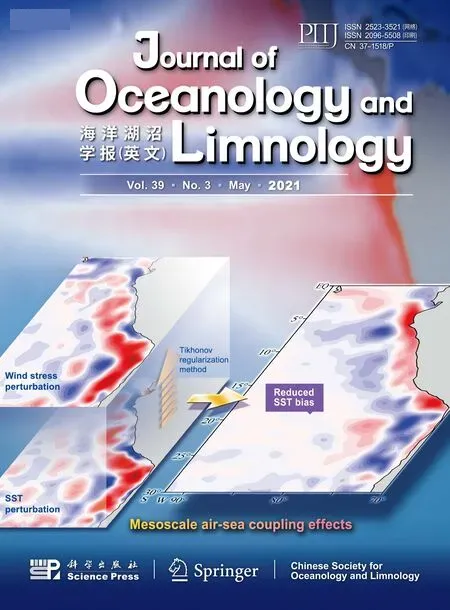Paragnomoxyala papillifera sp. nov. (Nematoda:Monhysterida) from the Bohai Sea, China*
2021-06-15YanSUNYongHUANG
Yan SUN , Yong HUANG ,
1 College of Life Sciences, Liaocheng University, Liaocheng 252059, China
2 College of marine Life Sciences, Ocean University of China, Qingdao 266003, China
3 Key Laboratory for Ecological Conservation and Biodiversity of Institution of Higher Learning of Shandong Province,Liaocheng 252059, China
Abstract A new free-living marine nematode species of the family Xyalidae from Laizhou Bay of the Bohai Sea, China is described and illustrated herein. Paragnomoxyala papillifera sp. nov. is characterized by large funnel-shaped buccal cavity, circular amphidial fovea located posterior to buccal cavity, straight spicules with slightly curved distal end, gubernaculum absent, four papilliform precloacal supplements, tail conico-cylindrical with two ventral embossments in males and having longitudinal rows of cervical setae and subventral caudal setae in males. The new species is easily identified from other two recorded species in the genus by having papilliform precloacal supplements and ventral embossments along conical portion of tail of males. A pictorial key for three species of Paragnomoxyala and comparative table of three species with important characteristics are provided.
Keyword: free-living marine nematodes; taxonomy; new species; Laizhou Bay
1 INTRODUCTION
To date, the full scope of nematodes diversity in the sea areas of China is largely unknown due to insuffi cient investigations. Taxonomical studies on free-living marine nematodes in China have been carried out mainly in the Yellow Sea, the East China Sea and the South China Sea. Only few studies have been performed in the Bohai Sea. In order to study the biodiversity of free-living marine nematodes in the Bohai Sea,sediment samples were collected in many sites from intertidal to sublittoral regions in these habitats. Up to now, only 56 nematode species have been described in the Bohai Sea (Sun et al., 2019). Among these species,fourteen species were described as new to science.Recently, an unrecorded species was identified and is described here asParagnomoxyalapapilliferasp. nov.
GenusParagnomoxyalawas erected by Jiang and Huang (2015) based on diagnosed characters of cuticle striated, buccal cavity large, funnel-shaped and extended anteriorly, four cephalic setae, labial sensillum not setiform, amphidial fovea circular,spicules slightly straight, gubernaculum absent, tail conico-cylindrical with three terminal setae. At present, two species,ParagnomoxyalabrevisetaJiang & Huang, 2015 andParagnomoxyalamacrostoma(Huang & Xu) Sun & Huang, 2017 were recorded around the world (Bezerra et al., 2018).
2 MATERIAL AND METHOD
Undisturbed sediment samples were obtained from intertidal beach of Laizhou Bay using a sawn-offsyringe with a 2.6-cm inner diameter in October 2016.The samples were taken to a depth of 8 cm and divided into three sections, (i.e. 0–2, 2–5, and 5–8 cm), then fixed with 10% formalin in seawater for long-term preservation.
In the laboratory, sorting and mounting of nematodes were carried out as already indicated in our previous papers (Huang et al., 2019; Qiao et al.,2020). The descriptions were made from glycerinmounts using a diff erential interference contrast microscope (Leica DM 2500). Line drawings were made with the aid of a camera lucida. All measurements were taken using Leica LAS X version 3.3.3, and all curved structures were measured along the arc or median line. Type specimens were deposited in the Marine Biological Museum of the Chinese Academy of Sciences, Qingdao.
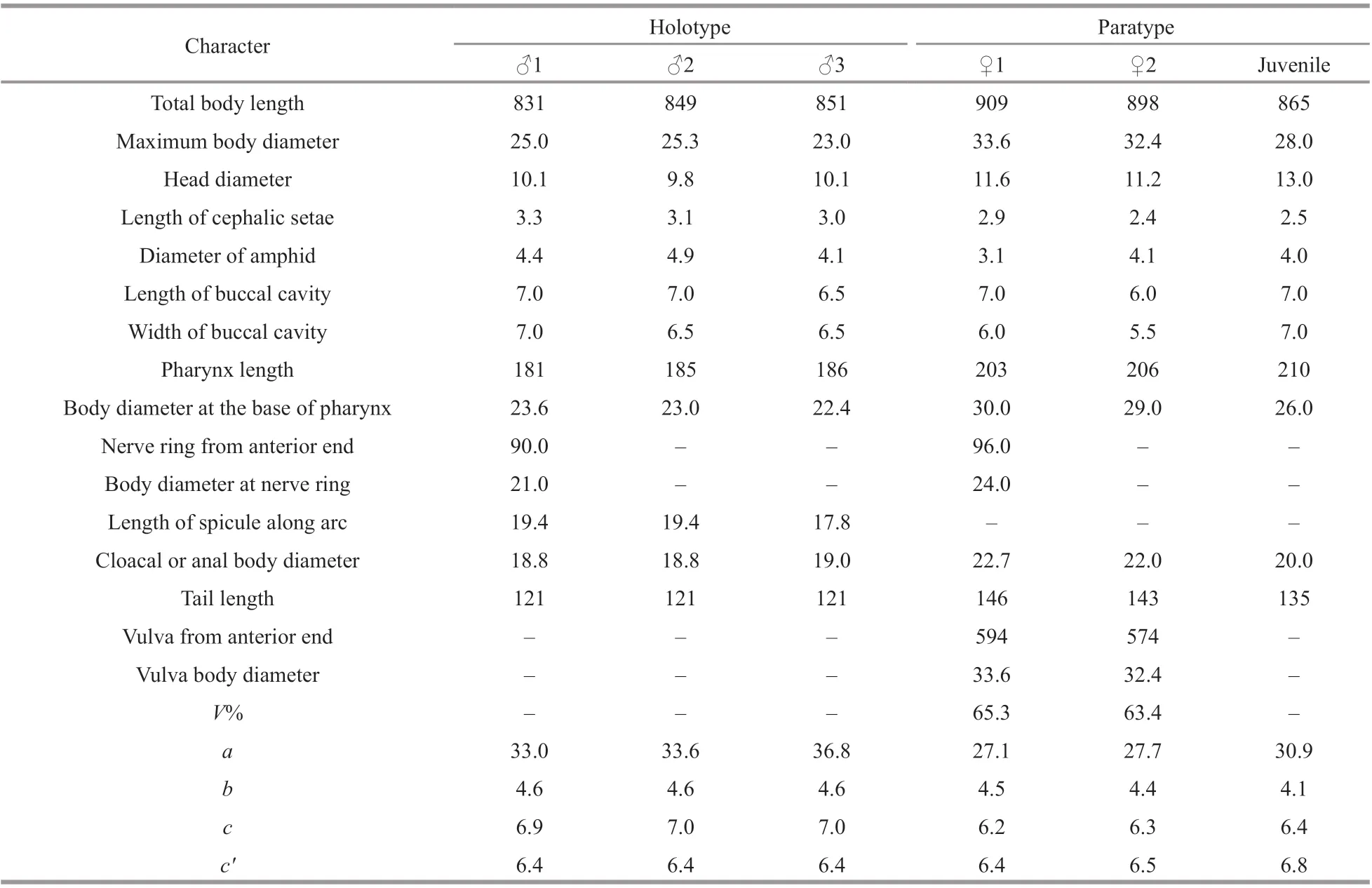
Table 1 Individual measurements of Paragnomoxyala papillifera sp. nov. (in μm except a, b, c, c′, and V%)
Variables of measurement used in this paper:a: the ratio of body length to maximum body diameter;b:ratio of body length to pharynx length;c: ratio of body length to tail length;c′: the ratio of tail length to cloacal or anus body diameter;V%: position of vulva from anterior end expressed as a percentage of total body length.
3 SYSTEMATICS
Order Monhysterida Filipjev, 1929
Family Xyalidae Chitwood, 1951
GenusParagnomoxyalaJiang & Huang, 2015
Updated diagnosis. Xyalidae. Cuticle transversely striated; large funnel-shaped buccal cavity without teeth, lips extended anteriorly; labial sensilla papilliform,four cephalic sensilla setiform; amphidial fovea circular;slender spicules slightly straight; gubernaculum absent;precloacal supplements present or absent; tail conicocylindrical with three terminal setae.
Paragnomoxyala papilliferasp. nov. (Figs.1&2).
3.1 Type material
Three males, two females and a juvenile were obtained from Laizhou Bay. Holotype ♂1 on slide WF-23-4-6. Paratypes ♂2 on slide LZW-9B2-2-12, ♂3 on slide LZW-9B1-1-3, ♀1 on slide WF-23-2-2, ♀2 on slide LZW-9B1-2-7 and juvenile on slide WF-23-4-6.
3.2 Type locality and habitat
Specimens were collected from the intertidal silt sediment (0–2 cm surface layer) along the coast of Laizhou Bay (37°13′17″N, 119°10′34″E).
3.3 Etymology
The species name is derived from the Latinpapilliferaand refers to having papilliform precloacal supplements in males.
3.4 Measurement
All measurement data are given in Table 1.

Fig.1 Paragnomoxyala papillifera sp. nov.
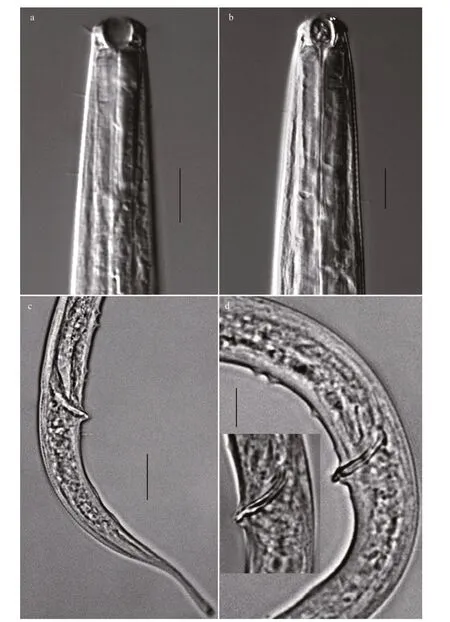
Fig.2 Paragnomoxyala papillifera sp. nov.
3.5 Description
Males. Body slender, cylindrical, gradually tapering towards both extremities. Total body length is 831–851 μm, maximum diameter is 23.0–25.3 μm. Cuticle transversely striated, beginning at base of buccal cavity and ending at tail tip. Inner and outer labial sensilla papilliform, four cephalic setae, 3.0–3.3-μm long. In the pharyngeal region of the body some short setae more or less arranged in six longitudinal rows.Buccal cavity large, funnel-shaped with slightly cuticularized walls, without tooth, 6.5–7-μm long and 6.5–7-μm wide (i.e. 60% of corresponding body diameter wide). Amphidial fovea circular, being 4.1–4.9 μm in diameter (about 35% of corresponding body diameter), situated at 7 μm from anterior end.Secretory-excretory system not observed. The nerve ring is located at the middle of pharyngeal length, and surrounded the pharynx at 48% ofits length from the anterior. Pharynx cylindrical, slightly expanded towards the base, about 181–186-μm long. Cardia small, conical. Tail conico-cylindrical, 121-μm long,with two ventral embossments along the conical portion. The two embossments are 12-μm apart, and the proximal one is 37-μm from the cloaca. Cylindrical portion of tail occupies a third of total tail length, with a swollen tip. Three terminal setae very short, 2-μm long. Two longitudinal rows of subventral caudal setae present. The longest postcloaca setae is 6-μm long.Three caudal glands well developed.
Reproductive system with monorchid, one anterior outstretched testis stretches forward to the pharyngeal base. Spicules are paired, equal and almost straight,only curved at distal end, about one cloacal or anal body diameter long. Gubernaculum is absent. Four papilliform precloacal supplements, uneven arrangement. The most proximal one is 44 μm from the cloaca, the second one is 39 μm from the cloaca,the third one is 17 μm from the cloaca, and the distal one small, just in front of the cloaca.
Females. Similar to males in most morphological characters except with slightly smaller buccal cavity and amphid size, lacking cervical setae, tail without ventral embossments and caudal setae. Buccal cavity 7-μm long and 6-μm wide (i.e. 50 % of corresponding body diameter wide). Amphidial fovea is 3.1–4.0 μm in diameter (i.e. 24%–31% of corresponding body diameter), situated at 8 μm from anterior end.Reproductive system monodelphic, a single anterior outstretched ovary to the left side ofintestine, and stretching forward close to the pharyngeal base. Vulva situated posterior to mid-body (63.4%–65.3% of body length from anterior end).
Juvenile. Similar to males in most morphological characters, especially in having large buccal cavity(7-μm wide and 7-μm long).
3.6 Diff erential diagnosis and discussion
Paragnomoxyalapapilliferasp. nov. is characterized by having longitudinal rows of cervical setae and subventral caudal setae in males, large funnel-shaped buccal cavity, circular amphidial fovea located posterior to buccal cavity, straight spicules with slightly curved distal end, gubernaculum absent,four papilliform precloacal supplements, tail with two ventral embossments along conical portion of tail in males.
Paragnomoxyalapapilliferasp. nov. is diff erent from other known species in the genus mainly by precloacal papilliform supplements and caudal ventral embossments present or absent, cervical setae and caudal setae present or absent in males.Paragnomoxyalapapilliferasp. nov. diff ers fromP.macrostoma(Huang and Xu) Sun & Huang (2017)in having four papilliform precloacal supplements and two caudal ventral embossments (versus lacking of any supplements inP.macrostoma), cervical setae and caudal setae present in males (versus absent),amphid posterior to buccal cavity (versus amphid located at level with buccal cavity base). In the same way, the present species distinguishesP.brevisetaJiang & Huang, 2015 by lacking of any supplements and cervical, caudal setae and having large cylindrical buccal cavity in the latter species. Further diff erence between the new species and other congeners can be inferred from Table 2 and the pictorial key (Fig.3).
4 DATA AVAILABILITY STATEMENT
The authors declare that the data supporting the findings of this study are available within the article.The data will be available on request from the corresponding author.
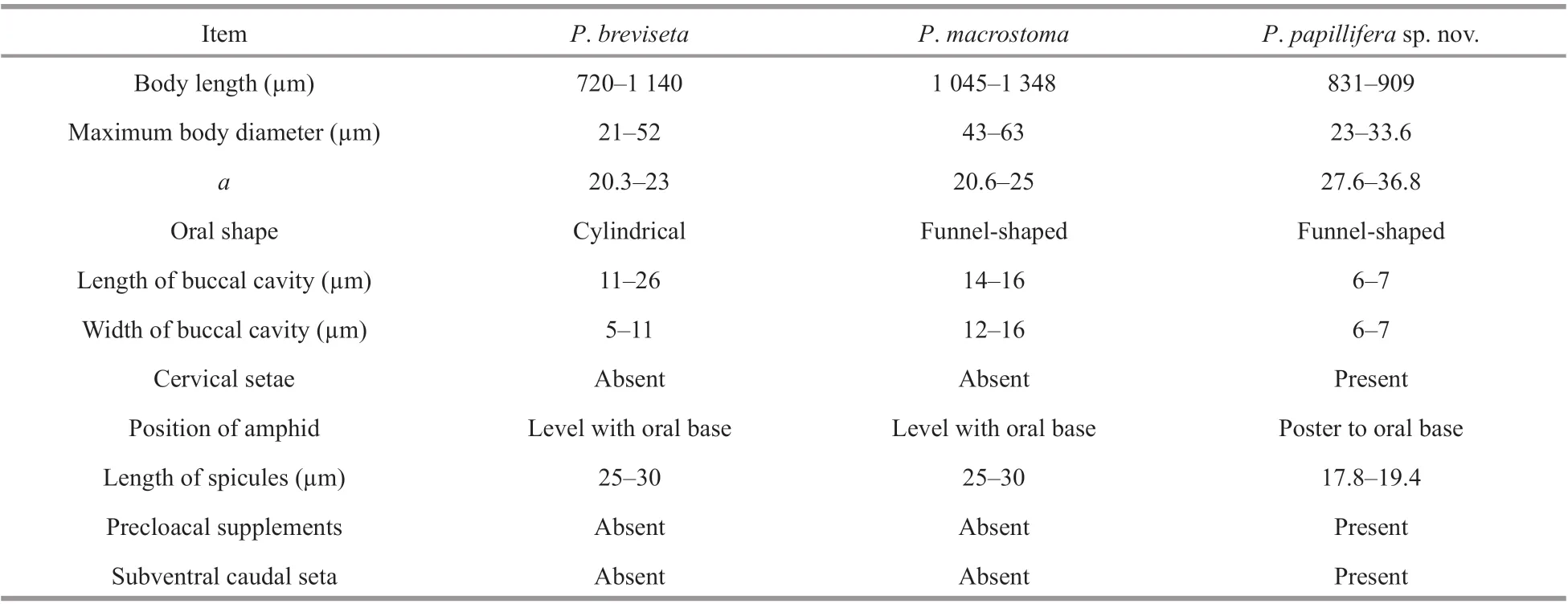
Table 2 Comparative table of three species with important characteristics
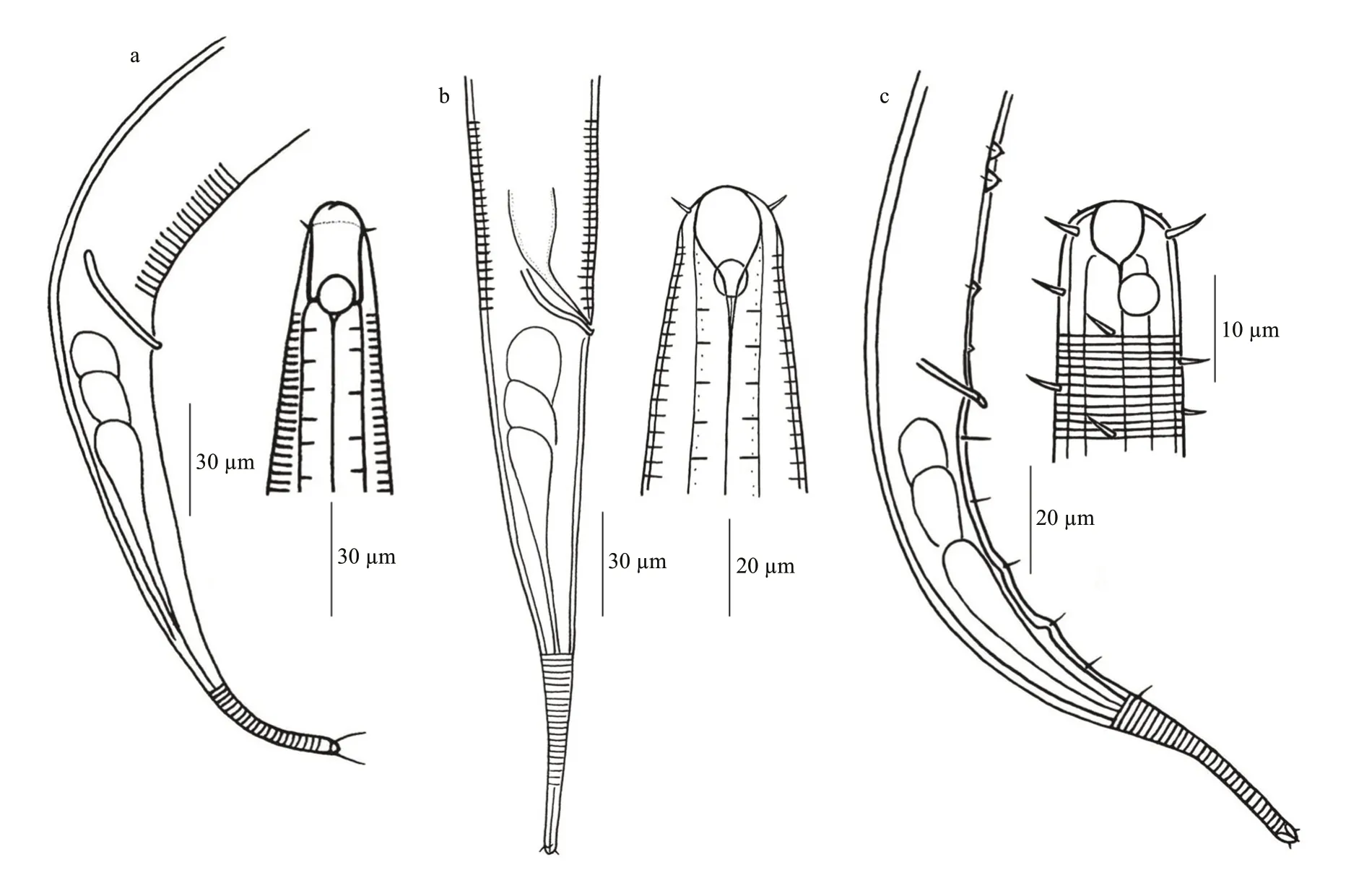
Fig.3 Comparison of the morphological features of males for three species of Paragnomoxyala
5 ACKNOWLEDGMENT
The authors are greatly thankful to four anonymous referees for their reviewing and improving the manuscript.
杂志排行
Journal of Oceanology and Limnology的其它文章
- Using statolith shape analysis to identify five commercial Loliginidae squid species in Chinese waters*
- Construction of the first high-density genetic map for growth related QTL analysis in Ancherythroculter nigrocauda*
- On microbial community of Pyropia haitanensis by metagenomic analysis*
- Affi nities of freshwater “Chantransia” stage algae(Rhodophyta) from China based on molecular and morphological analyses*
- Morphology and molecular phylogeny of three species of Coolia (Dinophyceae) from Hainan Island, South China Sea*
- Eff ect of polystyrene microplastics and temperature on growth, intestinal histology and immune responses of brine shrimp Artemia franciscana*
